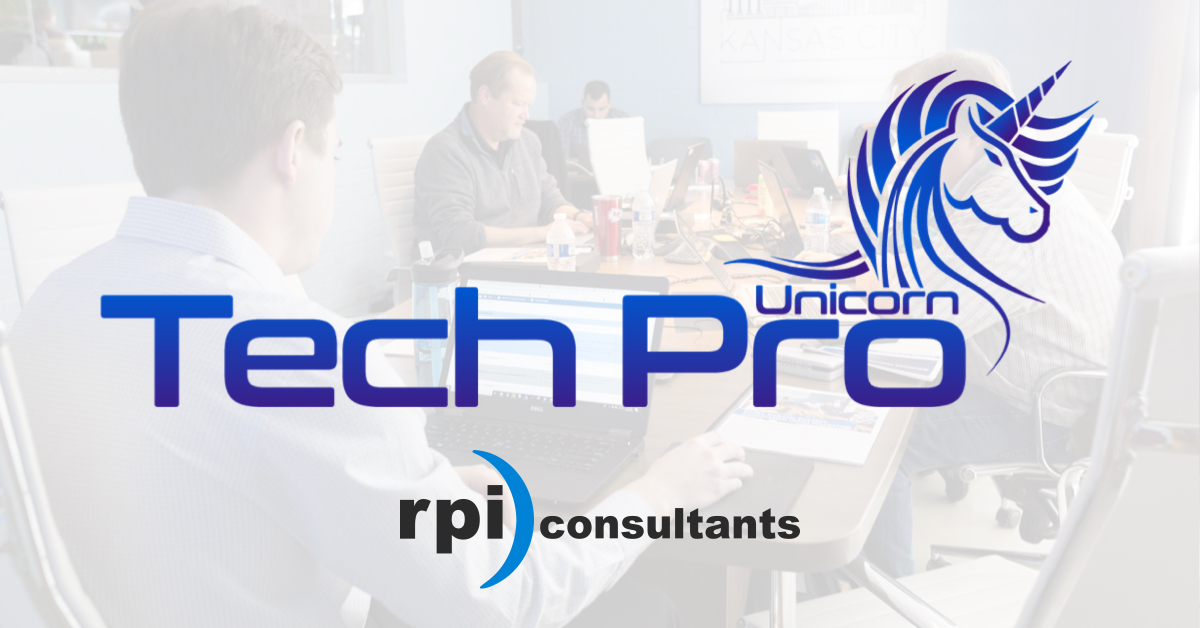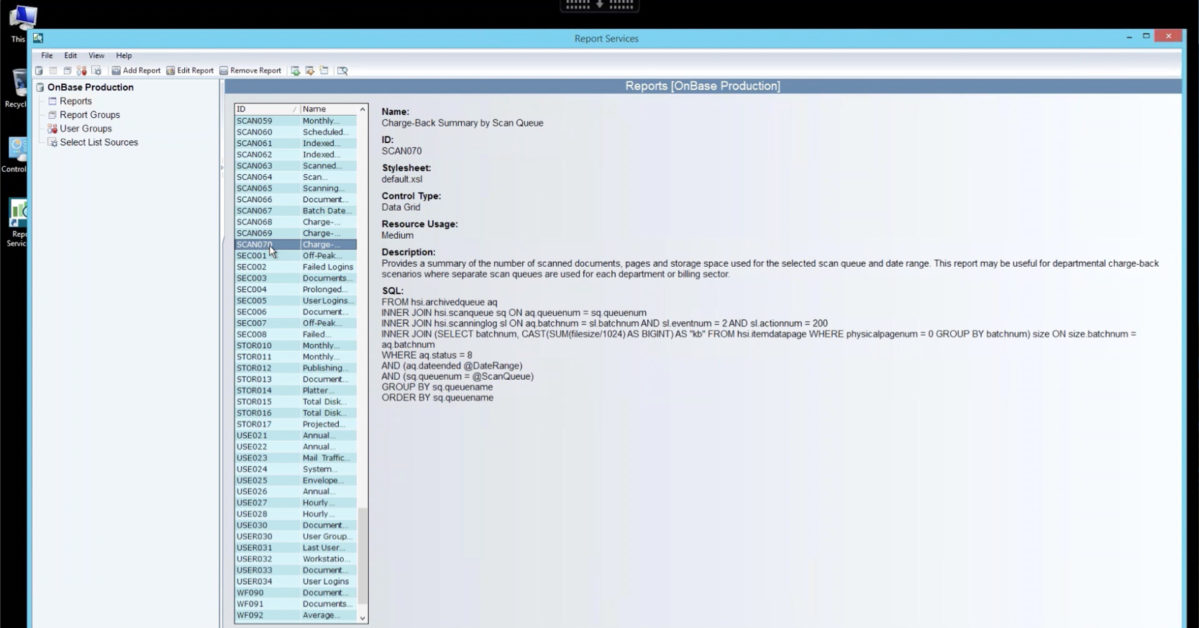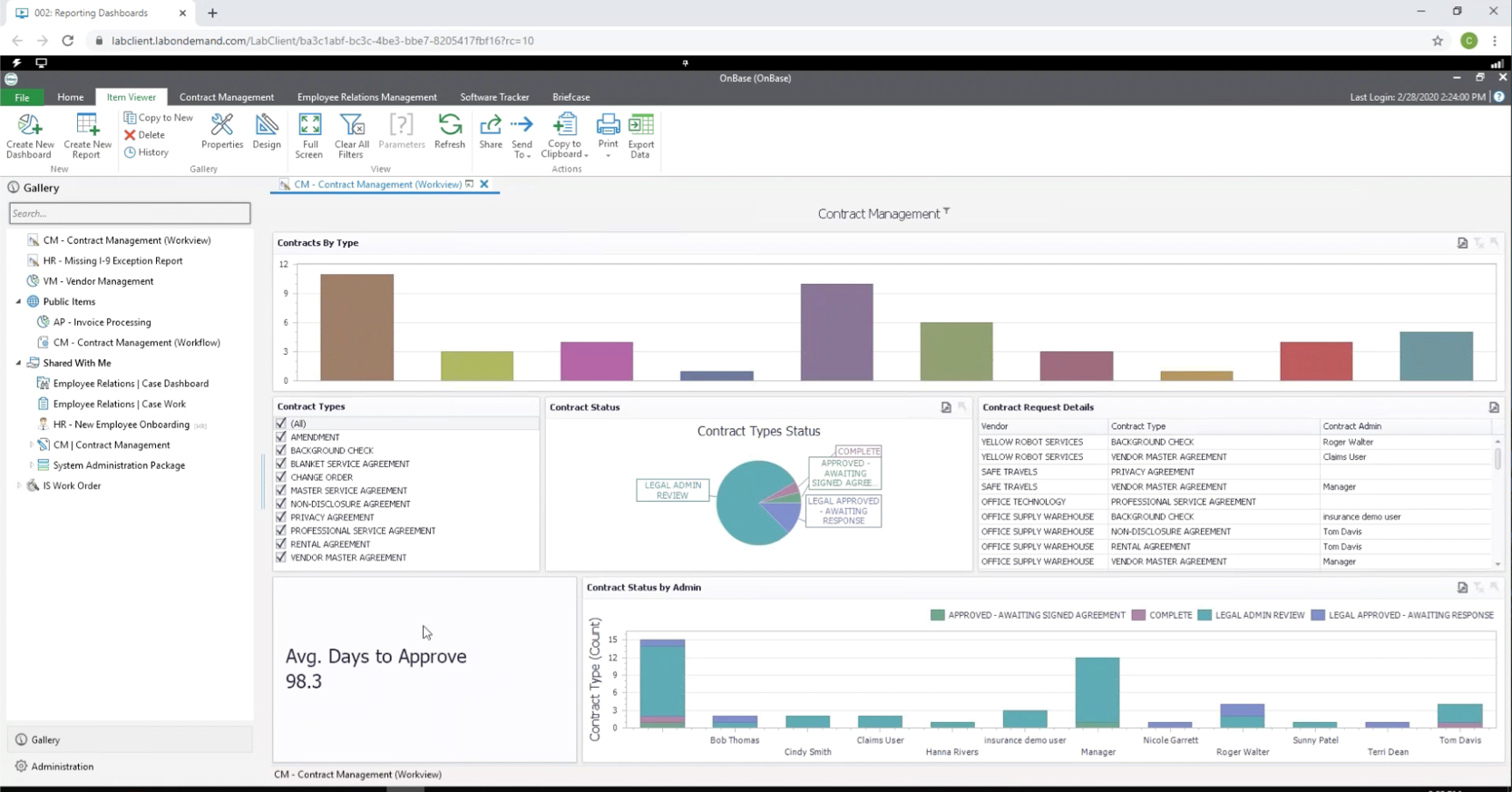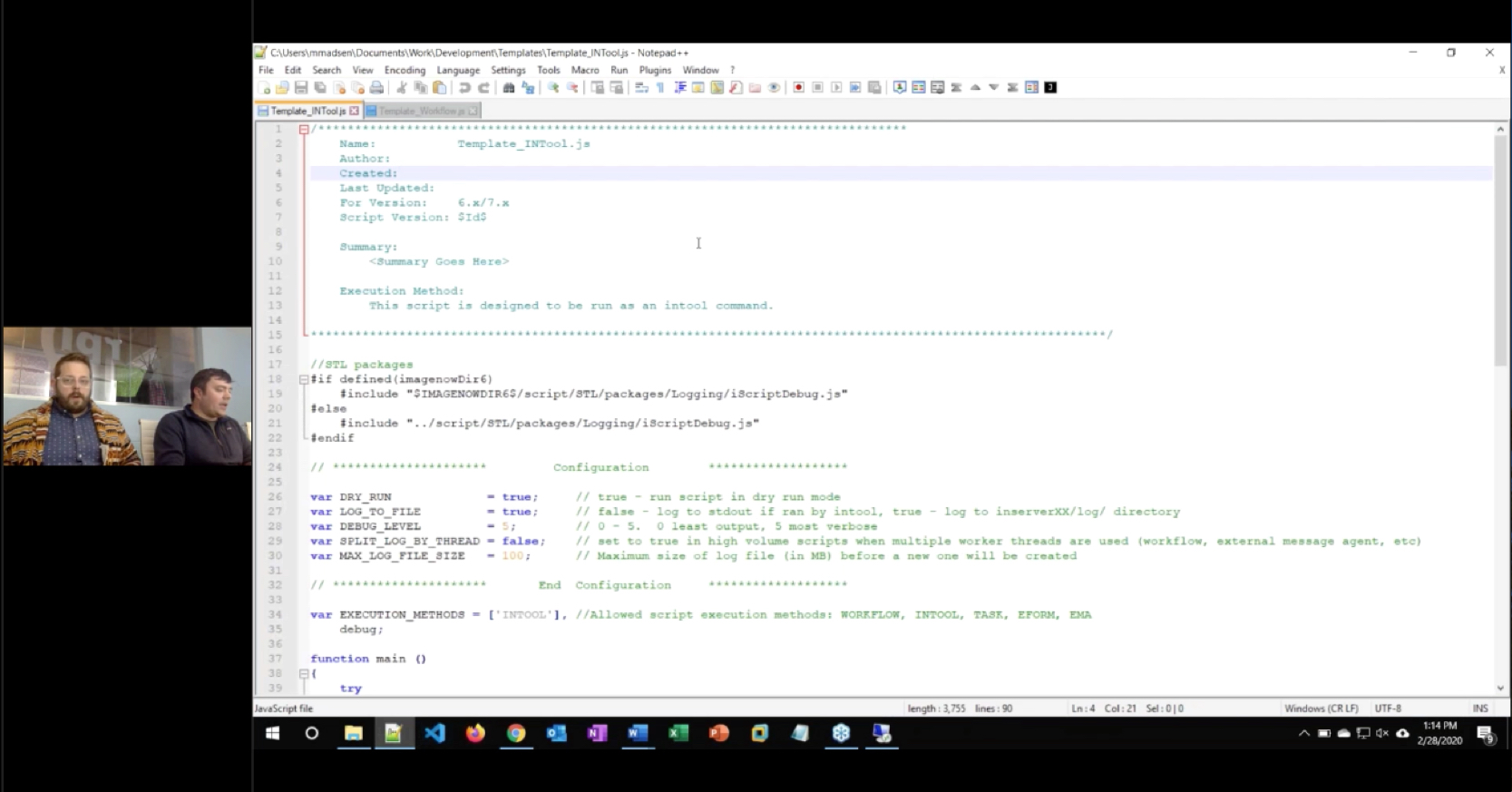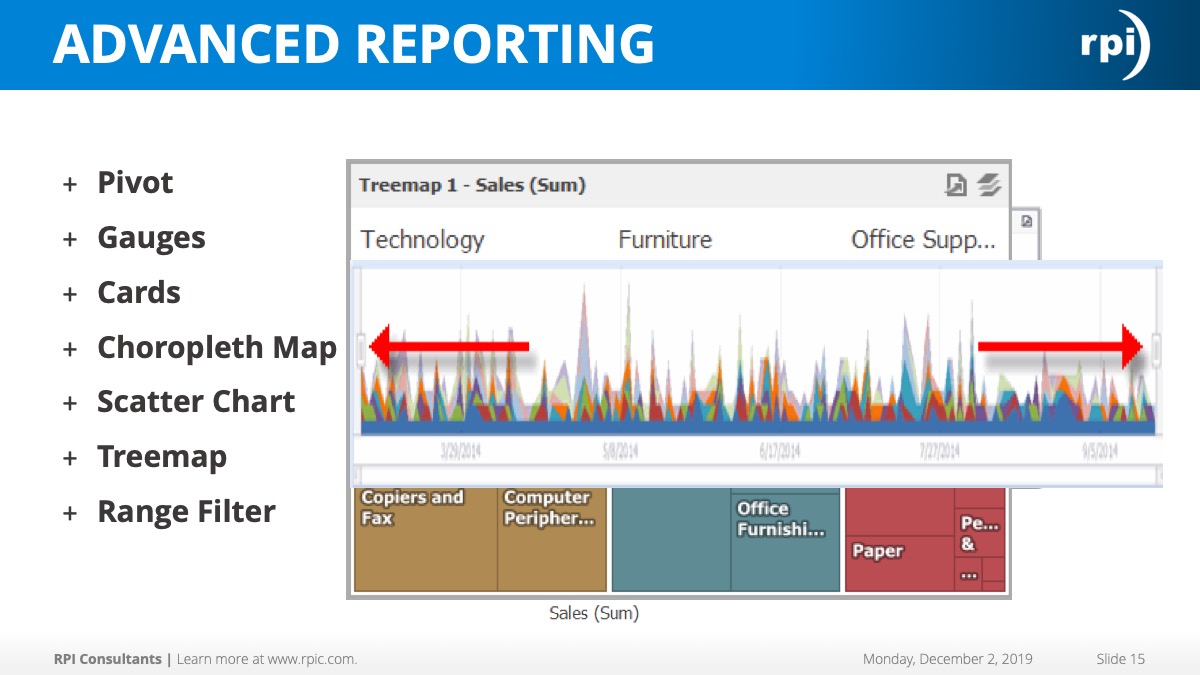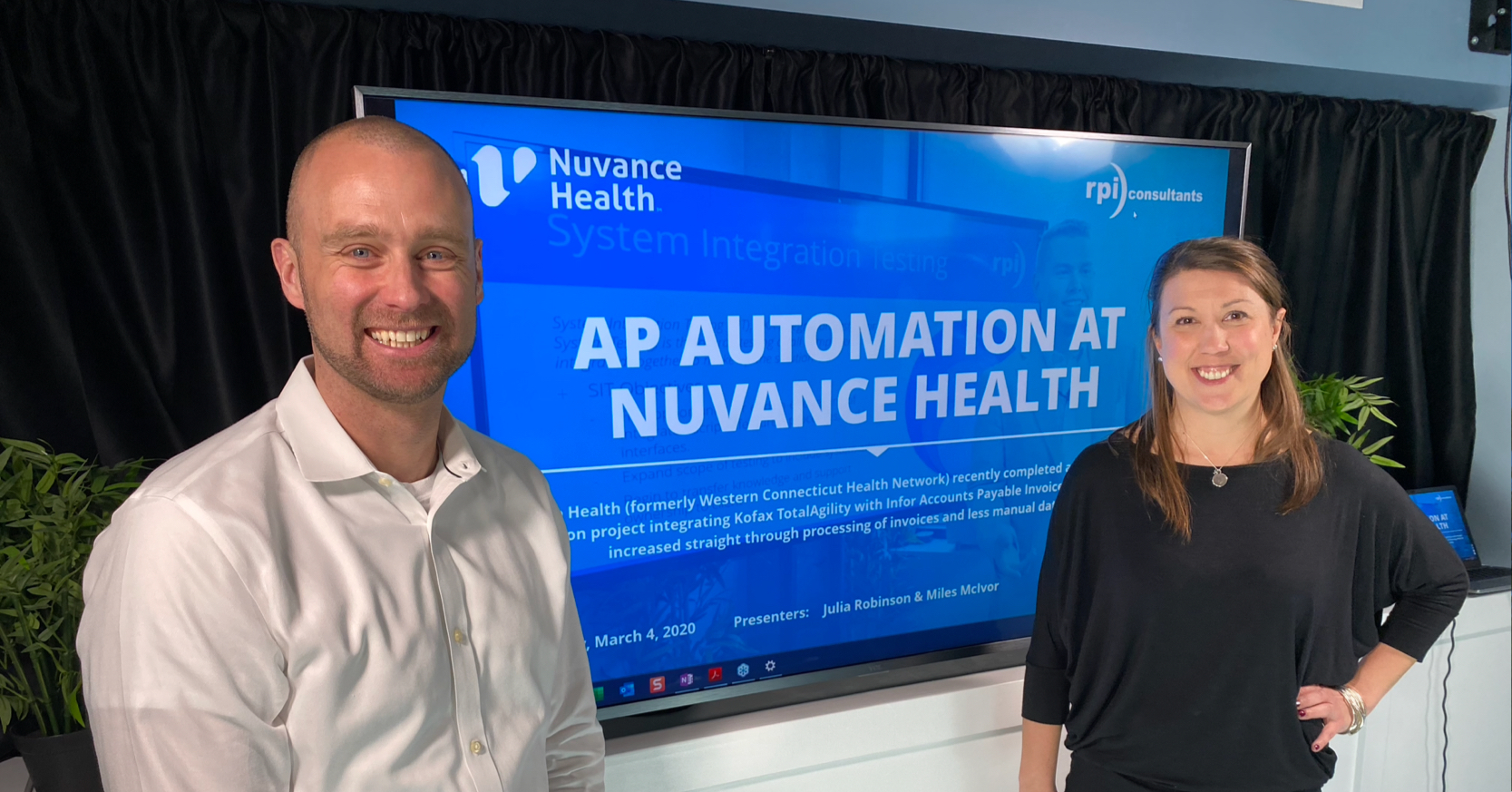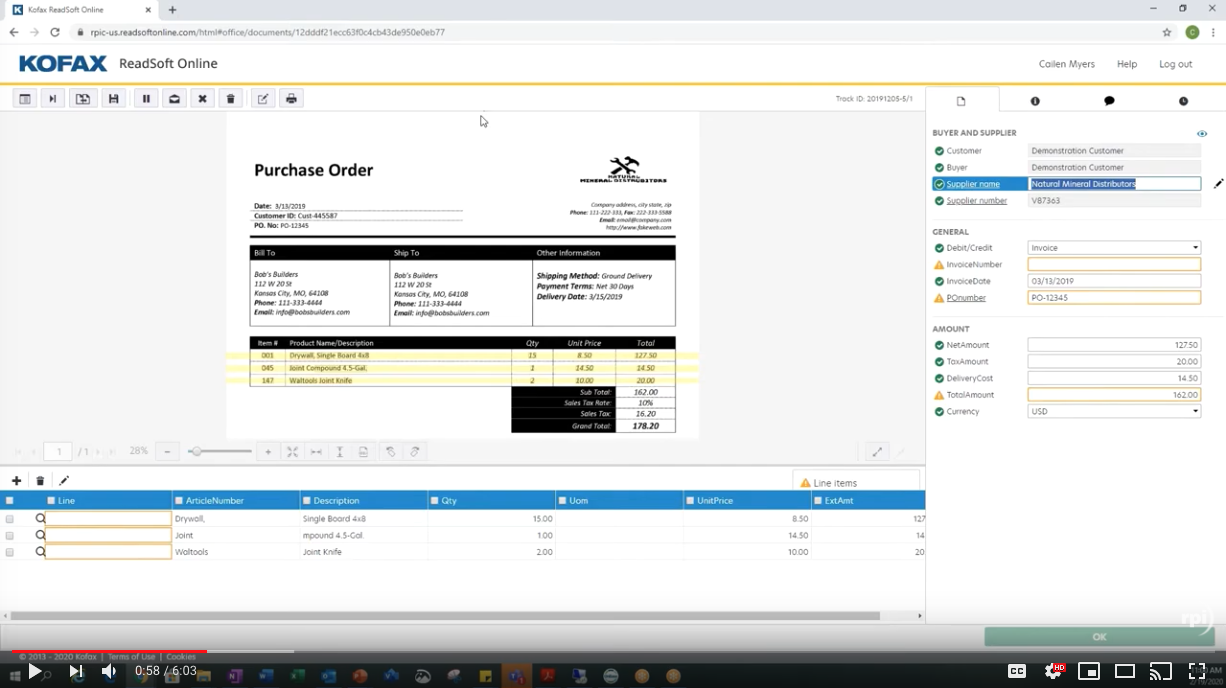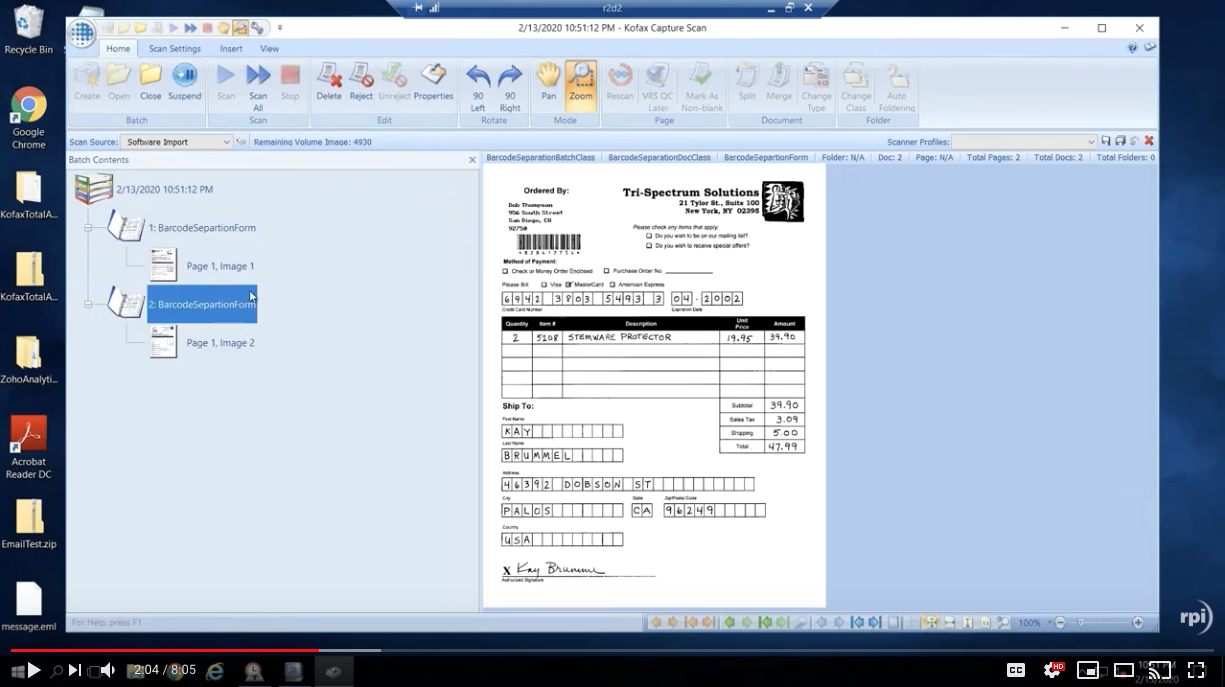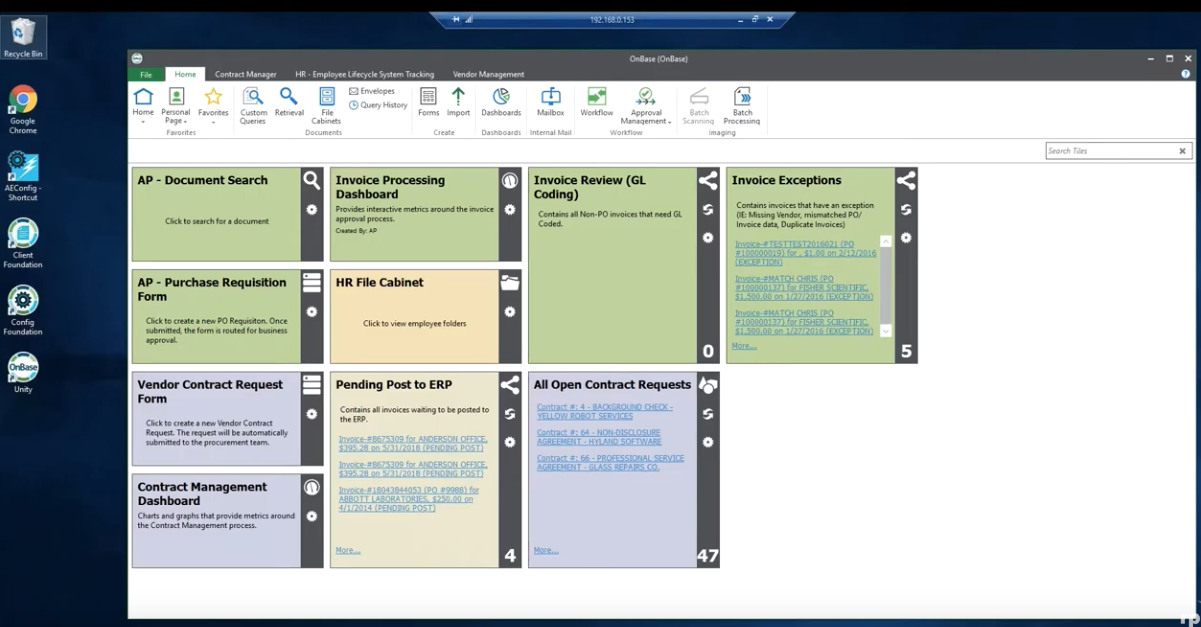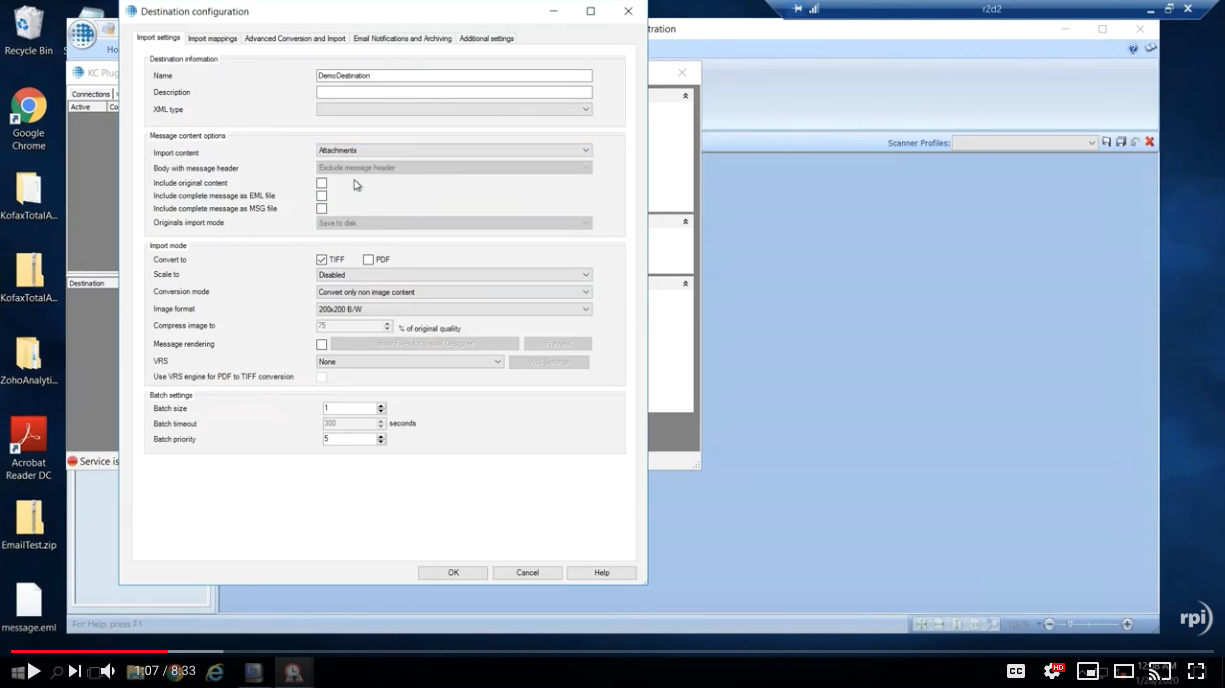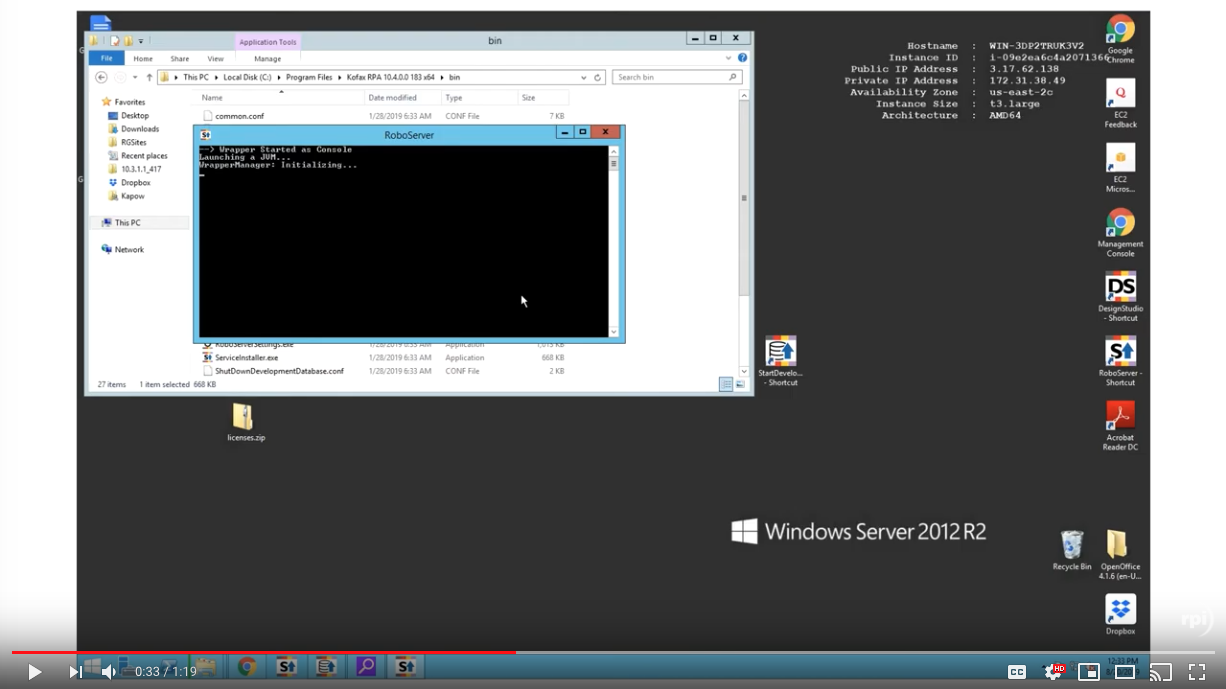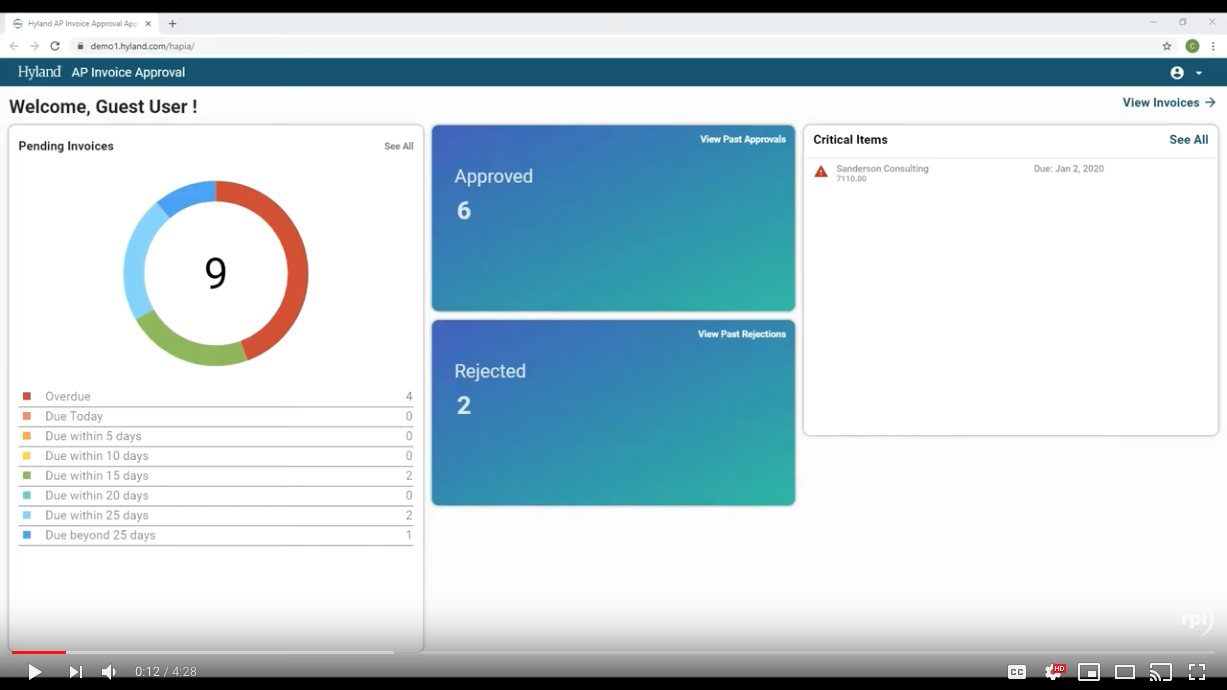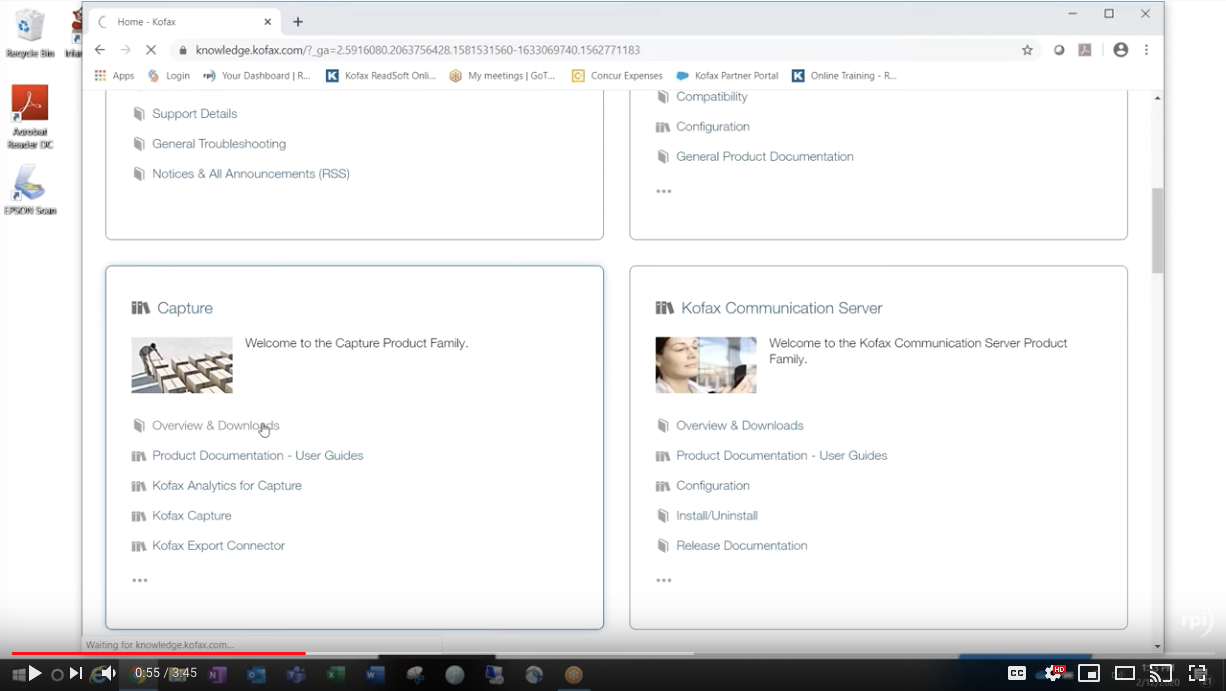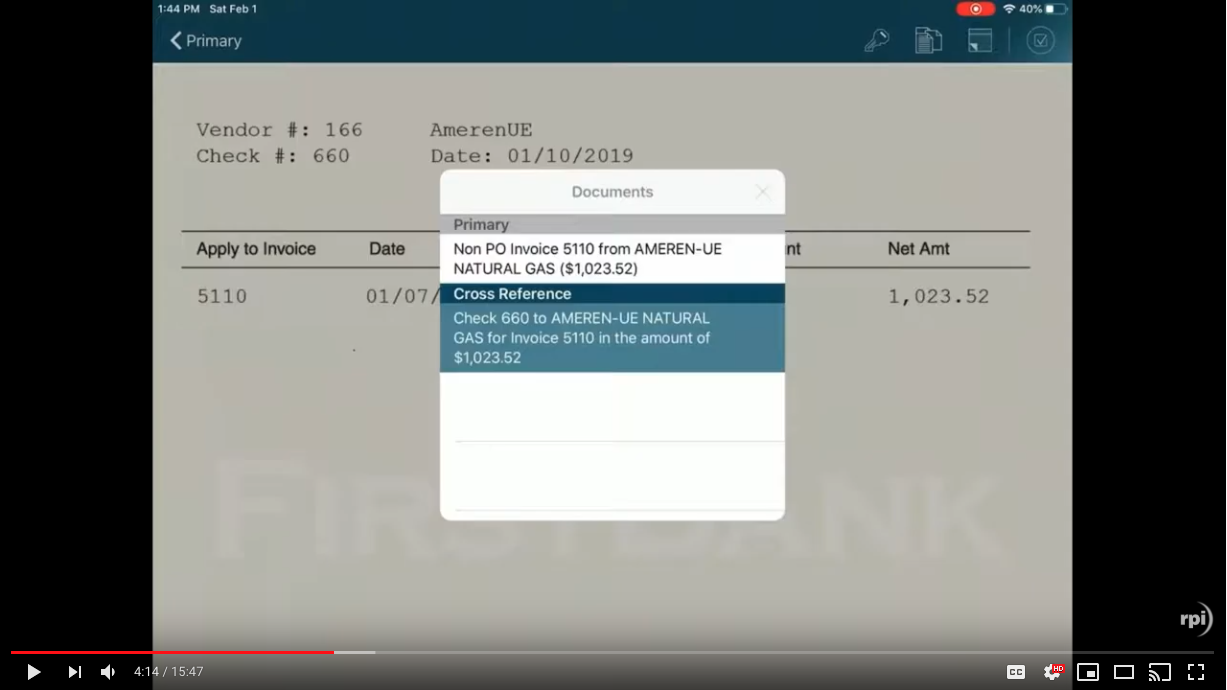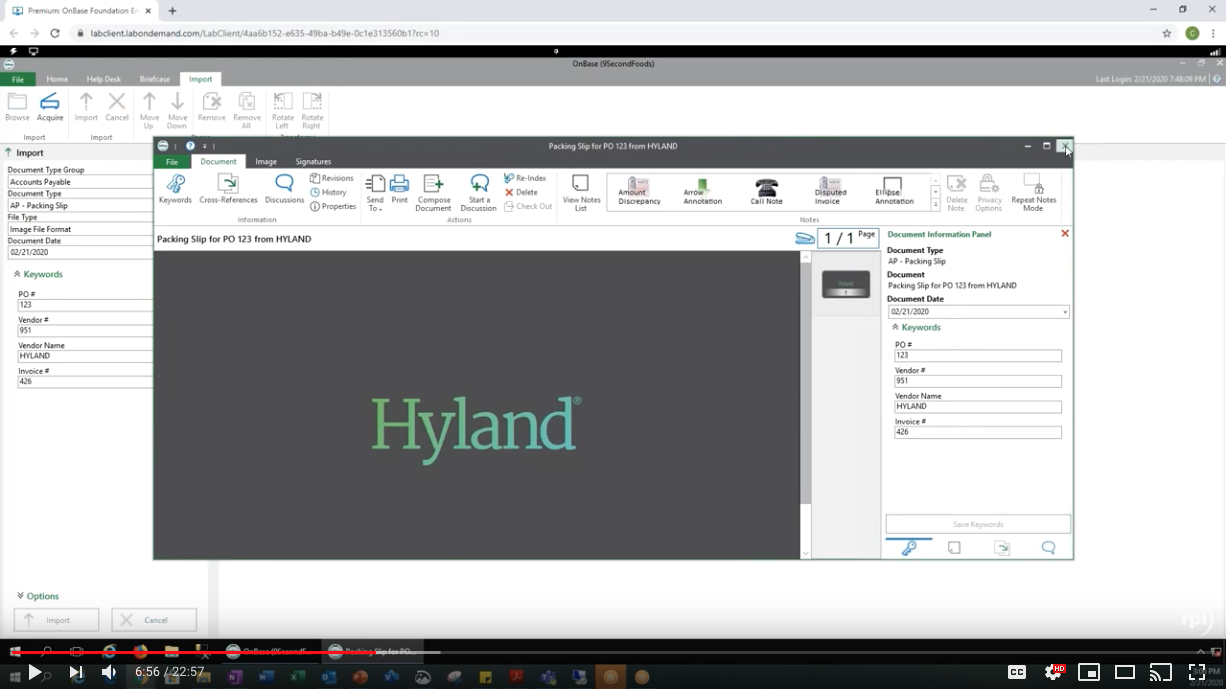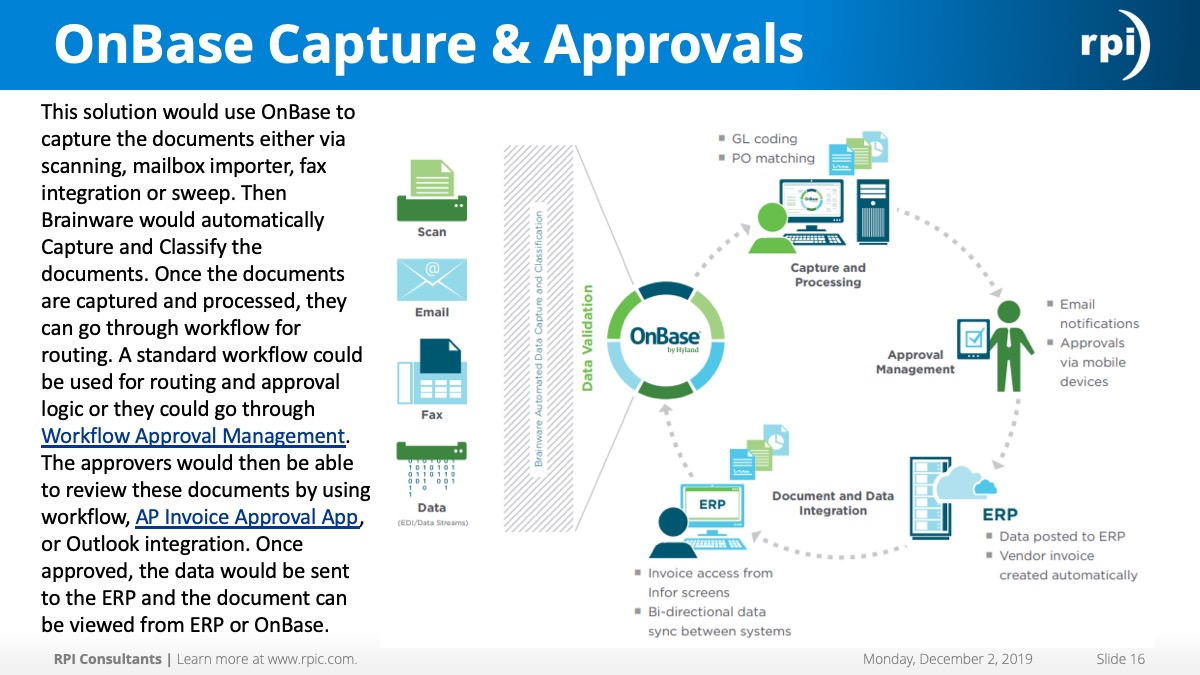Alex:
Hello, everyone and welcome to another Webinar Wednesday with RPI consultants. This is the final webinar from the ISTS team, and today we are going to be talking about how to simplify workloads with Onbase approval manager.
A few house keeping things to start with. First and foremost, this is going to be recorded and posted on YouTube at a later date. The slide deck will be sent out, as well, for your reference. And that will include the product demo in that as well. If you have any questions, we have a moderator standing by, so please put that in the Go-To-Webinar question section. And lastly, if you have any other recommendations or ideas or topics that you’d like to talk about as part of any kind of ECM or solutions base, please let us know.
And then the final item here, our Lawson Summer Webinar series, the Summer Sizzler if you will, is going on right now, and if you’d like to join a few of those that are left throughout this week follow this link here. And since this is our last one today, we’ll just highlight the ones that we have coming up next month. We’ve got AP Agility for Kofax KTA, which is a fantastic product. RPI’s Email Capture Service, which is also great. And then OnBase Workflow Solutions. We’ll provide a link to those at the end of this webinar for you guys to register for those.
A little bit about myself. I’m Alex Lindsey, I’m a senior solutions architect. I’m with RPI Consultants. I’ve been working in the ECM workflow, OCR space for over six years now. I specialize in accounts payable integrations a lot, and help to automate our clients.
A few things on the agenda. First and foremost, we’re gonna talk about our favorite thing, which is ourselves, RPI Consultants. We’re gonna jump into OnBase Approval Manager, what it is. We have a short video, as well, to highlight how you would change a few things in it, how you configure it and what it looks like as an end-user, using OnBase. And we’ll close that with some considerations and use cases, and then open it up for Q&A.
So a little bit about RPI Consultants. We are a professional services organization, we have 80 full-time consultants, project managers, technical architects, with offices spread across Tampa, Baltimore, and Kansas City, Missouri, where we are located. If you’re working with someone from the Imaging Strategy team, we’re probably here. We offer a lot of different services around that, anything from as simple as scripting a process to full solution re-designs. If you are a customer that has a new product, or a customer that has an existing product but are just overwhelmed and need something like managed services, we’re happy to work with you there. And we are partners with all of these software [companies] here. Perceptive, OnBase, both owned by Hyland at this point. Brainware, Kofax, as well as Infor, also.
So jumping right in, OnBase Approval Manager, what is it? It is a separately licensed product, offered by OnBase that integrates directly into your OnBase workflow. Think of it in a way where you have workflow in your OnBase studio, you get this separately licensed product, Approval Manager, Workflow Approval Manager, they like to call it, and you integrate it into your workflow processes in the designer. One of the big features of this, if you’re familiar with OnBase, you may have built out approval processes before that may have been very queue intensive. You had a lot of cumbersome logic to build out, maybe some automations, some scripting. Basically, it ultimately leads to many, many queues, so one of the big benefits of this and I’ll harp on this quite a bit, is that you get one workflow queue with the approval manager. No matter which workflow solution you’re working in, you can just automate your approvals and get your approval solution in there in just one specific queue.
It also provides business user administration. What that basically means is, if you’re the OnBase administrator who owns this product, you may not know what needs to change in an approval hierarchy. A lot of that knowledge exists with the department heads, and the business administrators, the people that are out there doing the approvals and heading up those staff. Basically, with the Workflow Approval Manager, it pushes that responsibility out to the clients, through the Unity client, for them to update and maintain that hierarchy or that approval matrix, which is a sigh of relief to a lot of administrators out there.
The other big thing is that it is solution agnostic. Meaning that, we of course talk about invoices a lot here, but this approval manager tool is meant to be used across any of your solutions. No matter how big your footprint is within OnBase or how many workflow solutions you have, you can plug in approval manager and have an approval process set up for something as complex as line-level approvals, all the way down to something where I just need Tom in procurement to approve and look at something.
How does it work? And we’ll get into that a little bit more, but ultimately, the structure and the way things are built out when you’re building your hierarchy, for instance, is that you set your paths. And within those paths, you can have multiple paths, by the way. Within those paths, you set multiple levels. And within those levels, you basically can assign multiple users. It’s a nice way to define where documents within OnBase workflow should go. And then basically assigning keywords or doc types or even Unity form fields, to basically decide where documents need to go, and at what level, and which user.
This is a screenshot of just basically a very simple invoice approval matrix, that’s been built out within Workflow Approval Manager. You can see here, you define the path. Within that path, you define certain levels, like amount, for instance. And from there, you assign specific users. One of the nice features in this, as well, is that you have a lot of options when you assign users. It’s not necessarily an “all or one” type of thing. You have the flexibility to say, “Okay, more than one.” If you assign it to two or three people, you have the option to say, “Okay, only one person can approve it, and that will move it on.” Or you can require that all of the people assigned approve it before it moves on in the solution.
In terms of notifications and things like that, it’s very similar to what you would see within OnBase. It uses that Hot Tasks to assign tasks out to users for their approval, no matter what the document is. It’s also highly integrated with Outlook. As you can see in the screenshot behind me here, you can approve or reject or send to an exception queue from your Outlook integration.
Without further ado, we’ll just jump into this video real quickly. This should give you a nice highlight of what the product looks like, how you would change a few things and how you would move a document forward in workflow through your approvals.
Alex (Demo):
Hello and welcome to another demonstration video authored by RPI Consultants. My name is Alex Lindsey, I’m a senior solution architect. And today I’ll be demonstrating OnBase approval manager.
So a few things to note before I jump into how it’s set up, and what you can do, and what some of the benefits are, it is a separately licensed product. It is meant to integrate directly into your OnBase workflow solutions. It is solution agnostic, meaning that it doesn’t have to be for one specific solution, you can use it for major, for your approval needs across HR solutions, accounts payable, requisitions, contracts, anything you can really think of. And so, no matter how big your footprint is for OnBase, approval manager is a great tool that allows you to do that.
Some of the key benefits I’ll call out early on so they make a little bit more sense in the video, is that for one, you may have an approval process built out already within your OnBase solution workflow, but with this, this condenses what you may have as multiple, multiple queues, lots of logic and things like that, built out already. This condenses it, with approval manager, condenses it down to one single queue that manages all of your approvals.
The other big benefit is that when approval manager sees a thing like that, particularly in AP invoice approvals, which we’re gonna demonstrate here today, is that the management and the update of that hierarchy and that matrix can be very cumbersome and very taxing sometimes, on the OnBase administrator, who may have to handle that for the entire company, which may be very large. So what approval manager does is it actually gives business owners access to the matrix, to modify it, from the Unity client.
So we’re jumping in real quick. The first place we start when we’re setting this up and it’s been installed, is in the OnBase studio. This is where we’re basically going to define just a few things here, when we set up this actual approval process. So from an actual workflow, you can add a new queue. And you know how this approval queue is actually. So when you assign your Ad Hoc user tasks, your actions associated with that, and once you’ve done that, you can hop up here to your processes.
Again, this can be used across difference solutions, we’ve got one set up for contract approval, and we also have one for AP invoice approval. I’ll just walk you through some of the quick configs here. First off, you define your document types. Your AP Non-PO invoices and those sorts of things. And then you define your user groups. This part is actually very important. This is defining who of the business owners that are gonna be managing the actual updates and the maintenance of the actual matrix hierarchy, so who gets assigned to what. This is a great benefit, you don’t see this in a lot of other solutions, so it’s important to assign the right people to manage that approval matrix on workflow basis.
From there, you have your approval users, whose actually going to be using the tasks from approval manager. And then your keyword types. We can’t assign anything to anyone unless we have some context around that. So we in your invoice approval process, you basically throw in a lot of keywords that we can define where invoices go, to who, based on, maybe even GL Account if you’re doing line-level. For our example, it’s something as simple as just the invoice total. You can also pull in Unity form fields, and then lastly, you’ll define your notification criteria. Whose going to be getting it, how often, yeah.
So we hop into client. We see our workflow, we’ve already got one invoice here, waiting for GL coding, but what I really want to point out is the actual approval management dropdown that you have available now. With this, again, I have access to everything so you can see, but you can define who can see what and who can modify which approval matrix.
I’m gonna go ahead and select AP invoice approval. And now you can see here, we’ve got a small matrix built out, to define where these invoices should go. The way this works is you can set up multiple paths. Within those paths, you can set up multiple levels. Within those levels, you can set up multiple users to be assigned these specifics tasks. It’s fairly easy to do. For your business administrators who will be updating this, if they’re able to do simple if-then statements to define the criteria, they should be able to handle this.
I’m gonna go ahead and do one real quick, I’m just gonna add a new level. We have a Non-PO invoice path, we need to define that it’s a Non-PO invoice. And now we want to add a level. Let’s just say this is Non-PO, invoices. I’m gonna put $5000. From there, you’ll make an evaluation type. We are defining this based on our keywords. So we select this specific keyword we want to actually set that criteria for, so invoice total. And then for our operator, something like “greater than”, or “greater than or equal to”, this is fairly standard. And then we define that value there. Lastly, all you have to do is add an approval. Of myself, for this. And there you have it.
These can get as complex or as simple as you need them to be. One thing to note here is that, when I updated this, those changes take effect immediately. There’s no service restarts or anything like that, because it’s built in directly with the workflow. You should see these changes from across.
One other thing to call out here is that you can actually import from a CSV in existing approval matrices. So if you’ve got this logic and hierarchy built out in an ERPU, it’s a new law center from PeopleSoft, or maybe you were just maintaining another flat file somewhere else, this can be leveraged to import that hierarchy, so you don’t have to necessarily build out everything from scratch from the beginning.
Along with the finance, you can also, if you have more than one person defined for a specific level, you can define that anyone can approve it, or if everyone must approve it. And if you go in to actually give the approval process, I’ll hop back over to the workflow, I’m gonna go ahead and submit this invoice for approval. Then I pop over here in my invoice approval queue. And find the specific I have here. And from here, you just have your standard task actions. Approve, reject, and of course “send to exceptions.”
That concludes my short demonstration of OnBase Approval Manager. Hope you’ve enjoyed it. If you have any questions, please reach out to RPI Consultants at any time. Thank you.
Alex:
All right, hope that gave you guys a good idea of what the product looks like and how to use things like that. Jumping into a few of the Considerations & Use Cases that you might be able to use it for.
First and foremost, one of the nice features of this is that you could leverage a legacy approval matrix to be imported into OnBase. You probably saw that in the video, as well. That is something that sometimes that takes a long time to build out, takes a lot of approvals from different businesses and things like that, so if it already exists in a system, if you have it built in like PeopleSoft for instance, or an HRAS system, that can be imported into approval manager to handle that and alleviate what might be a lot of manual build-out at the very beginning.
Again, one of the big things to consider here, as well, is that the approval matrix can be maintained through the OnBase Unity client, like you saw there. If you log-in as that user that has the ability and the security permissions to access that hierarchy, you can go in and change that. It also has auto-approval path support, so in some instances, it makes sense to bypass approvals. Whether that’s your own policy in your company or not, you can bypass it. And also the Outlook integration is also included in that. The main point being, it’s very flexible in terms of what you can do in terms of your approvals.
Some of the other benefits that you might find in this product, are that the approval matrix changes, when you change it on there, for instance when you saw me add a user or remove a user, those changes take effect immediately. If you have documents in flight, going through the approval process, those will get automatically updated without having a large restart or having any downtime or anything like that. Basically, no interruption to service.
It also alleviates the OnBase administrator’s responsibility. So if you’re pushing the maintenance of the approval matrix out to others, it frees them up to investigate other issues and focus on other items, as opposed to more of just a gopher that goes and does what everyone tells them to do, type of thing.
Simplified workflow, as well. One workflow queue, I’ll reiterate that again. It does clean up your workflow in terms of that, and condenses all that logic into one queue for you to process invoices or whatever else, through an approval process.
And probably most important, depending on the department, is the fact that it has succinct auditing and reporting. So basically, if you were ever audited and you need to track down where documents went, “Who approved a million dollar invoice? Or who rejected it? And why are we now getting sued?”, for instance, and those hypotheticals. It gives you a clear line of sight into who got the document or invoice, who approved it, who rejected it, and why.
Some additional use cases here. Obviously, accounts payable. Invoice processing, contracts management and employee onboarding are really big ones as well. I’ve also seen situations where you need to go through approvals for CPI raises, or bonus payouts and things like that. That can all be built out with the OnBase approval manager. Project plan reviews, and even your purchasing department can use this, as well as claims processing, to basically build out a hierarchy. It doesn’t even have to be approvals, it can just be a review process where things are automatically assigned to certain people, based on the keywords that you assign to those documents.
In closing, that is the Workflow Approval Manager by OnBase. It’s a great product, it does help your administrators, it does empower your business users as well, to maintain the policies that they have and have that reflected in their solutions. We’ll open up for questions now.
Speaker 3:
And for those of you on the call, I encourage you to submit your questions through the go-to interface so I can ask Alex here.
First question: “How does the product handle Out-of-Office resources?”
Alex:
Out-of-Office? It definitely handles Out-of-Office, so if you set your Out of Office for that user, you can definitely configure it to go and identify that and take action, and assign to potentially another user, or just have it hold. Basically, it’s a lot of if-then rules. If this, then do this, so it can be configured to do what you’d like it to do.
Speaker 3:
Piggybacking off of that, “How does the product handle, I guess, approvals that are not taking place?” So if there are items sitting in a queue, how does it do that? Is there any sort of proxy functionality?
Alex:
Proxy function? Oh, in terms of if it’s not moving forward? Yes, you can set standard alarms to go out, along with, we do this a lot with a lot of our solutions, whether it’s Perceptive or OnBase or Kofax, setting an escalation path. So you set an approval process in place, happy path, it goes to everyone that it needs to go to, and they approve it, or reject it for reasons, and then it comes back through the improvement.
But sometimes, people are lazy, and you need to encourage them to get along. A lot of times, we’ll set up an escalation path, escalation email situation where it goes to a person, gives them a little bit of a nudge, and then if it doesn’t move them enough, we will escalate it to potentially a secondary approver. Or even a level higher if we need to, to get the point across that, “Hey, these documents need to be reviewed, these invoices need to be approved, because we’re losing out on rebates here.”
Speaker 3:
“Are you able to dynamically add users to approve invoices? Based on an AD group.” So this way, the users update automatically.
Alex:
An AD group? Typically, with the approval matrix, you would import it still. There may be a way to hold that function. Maybe automate that a little bit. I think we’d have to explore it, potentially, but there should be a way for us to, either through scripting, I didn’t highlight it here, but within the actual configuration, you can highlight areas where you pull things to actually, through a scripted method, which wouldn’t be difficult, either, to pull those values if you need to.
Speaker 3:
“Are you able to schedule the imports to run?”
Alex:
Yes.
Speaker 3:
And then, “Can you report which invoices an approver has approved first period?”
Alex:
Yeah. That should be built into the functionality for you to basically see who is, who has and hasn’t approved for a certain time period.
Speaker 3:
Perfect, that’s all the questions we have.
Alex:
All right. Thank you guys so much for joining Webinar Wednesdays, please join us next month. We have a lot of other really good topics. Some additional resources for your information. We have a Knowledgebase, so if you are having trouble, spinning your wheels on certain things, maybe we have the answer. And also check out the rest of our webinar series that are going on and the Lawson ones that are going on this week. Thank you, guys.







